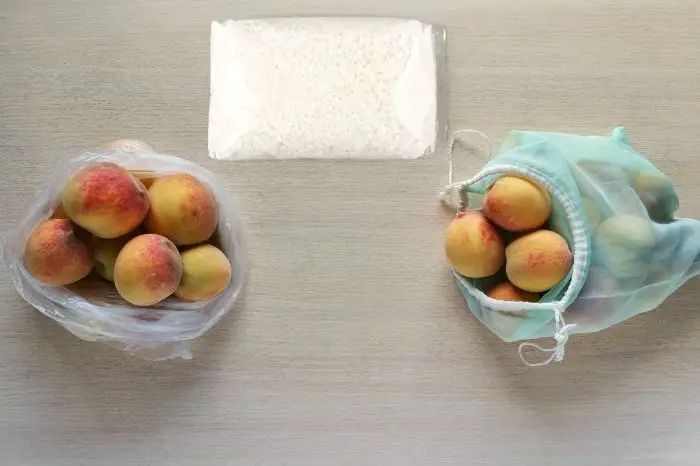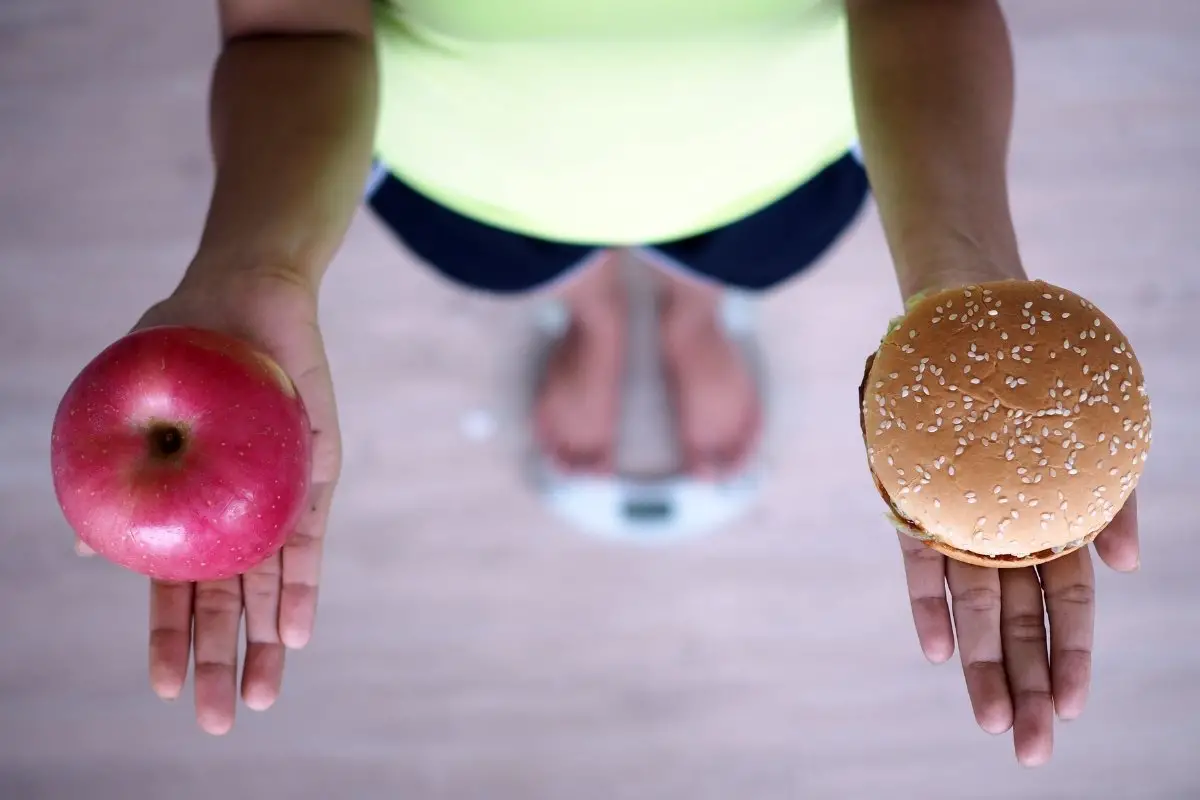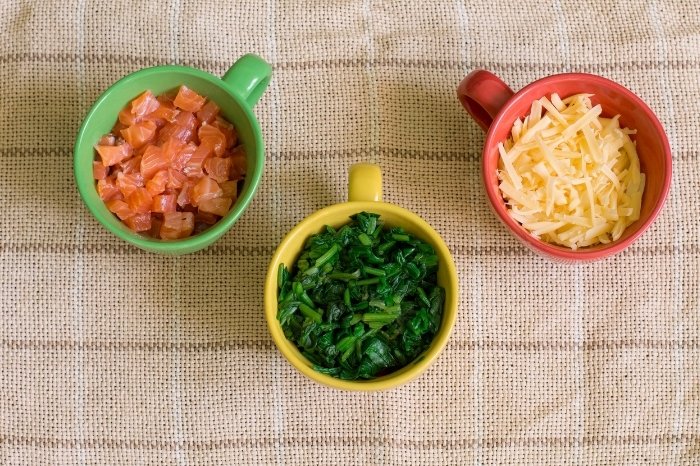Last Updated on February 13, 2023
How to weigh food without a scale? Usually, baking recipes need exact measurements. Besides that, it is indeed helpful to own a food scale. Yet, do not worry if you do not have one because you can use foods’ weights to benchmark other foods. So with that, it is an excellent way to quantify small amounts of various ingredients.
How to Weigh Food Without a Scale
Essentially, several pantry staples come in premeasured packages in different weights. With that, searching for lighter pre-weighed packages will be more difficult. However, you can detect foods weighing a pound or more with ease.
Moreover, it is best to find which pantry items are nearest in weight to the quantity specified in the recipe. In addition to that, premeasured weights like cans are very helpful since unopened until used in full. Also, for bigger quantities, make sure to use bags of flour or sugar. In this regard, ensure they come in one to five to ten-pound bags.

Weigh Food Without Scale
You can pour a few of the ingredients you want to measure into a plastic bag for starters. In that regard, it would help to use two hands. After that, ensure to estimate how the required ingredients’ weights correspond to the pantry staple’s known weight. Also, get the two weights as near as possible by subtracting or adding the ingredients to the plastic bag.
Moreover, ensure to set aside the recently measured ingredients. Since recipes that utilize various weighted items will be simpler if weighed with another ingredient. Because of this, you can keep the estimated weights skewed similarly. Likewise, the ingredients proportions will still stay the same.
If you’re looking for delicious recipes, click here:
Ways of Measuring Foods (Without a Scale)
Want to measure food, even if you do not own a scale? But first, recall that there were no scales in the early days. However, there was always the need to measure the weight of food without using a scale. With that, it was a matter of barter and sale. That is why people developed systems till the invention of rudimentary scales.
The Practice of Eyeballing Ingredients
Yes, you can indeed measure things by practicing. For example, when measuring salt, you can use your palm. With that, if you cup your palm, then, pour sufficient salt into the pit of your palm till it is approximately an inch across. Now, it is about a teaspoon. Likewise, a pinch of salt between the forefinger, second finger, and thumb is around 1/8 of a teaspoon. In addition to that, two of those are about 1/4 teaspoon.
La Boos Square Portion Control Plates (4-Section) – Made with Bamboo – BPA-Free Lunch Plate
Also, it is approximately 1/2 teaspoon if it is a mound in your palm or the size of a quarter. Moreover, keep in mind that the depression in the bottom of a beer can or soda holds precisely one tablespoon. So with that, practice with pinches the whole way to a tablespoon. It will indeed save plenty of time at the very least when you bake.
Create a Homemade Food Scale
Similar to the scales of justice with the fulcrum on top of a pole. In addition to that, the two little plates should be dangling from either of the fulcrum’s ends. In this regard, you can build on either a small scale to measure for baking ingredients. Likewise, you can measure it on a large scale to measure grain bags.
Moreover, you need items that you know the weight of, so it is easy for smaller items. For that reason, keep in mind that one ounce equals about one CD, five quarters, or twenty-eight paperclips. Also, a liquid ounce equals about 1/8 of a cup. Furthermore, an ounce of cheese is about three dice. On the other hand, to weigh bigger items, note that a gallon of water weighs around eight pounds. In this regard, remember that water weight is the most excellent pair for the baking items of your food scale.
Read more about:
The Measurement of Spoons and Cups to Weigh Food
Ounces to Teaspoons – Remember, one fluid ounce is equal to six teaspoons. If the recipe calls for two ounces of a particular liquid, you can use an equivalent of twelve teaspoons.
Ounces to Tablespoons – Keep in mind that one fluid ounce equals two tablespoons. In this regard, if the recipe needs four ounces, it would be easy to convert it into eight tablespoons. Additionally, ping pong balls are approximately two tablespoons each.
Ounces to Cups – Bear in mind; every cup has about eight ounces. And with that, you can easily do the math for any recipe. Moreover, remember that a softball is approximately two cups. On the other hand, a tennis ball is around a half cup. Likewise, a baseball has a similar amount as a half cup.
In addition to that, note that one-fourth cup is similar to the size of an egg. Also, it is essential to understand that you do not have to attain perfection.
- Twelve ounces is approximately a cup of honey
- Eight ounces is about one cup of butter
- Seven ounces is around a cup of granulated sugar
- Six ounces is approximately one cup of chocolate chips and powdered sugar
- Three ounces is about a cup of cocoa powder
Tips and Tricks: How to Weigh Food Without a Scale
For the most part, you will need to calculate when the recipe measures weight instead of volume. Although, the usual rule of thumb for liquid ingredients is one cup equivalent to eight ounces. It would be best to know that this is not completely true for dry ingredients. In that regard, it is best to know that all dry ingredients possess various weights per volume. With that, it is imperative to understand the different weights of every ingredient in your recipe.
How to Measure an Ounce Without a Scale
Measuring an ounce without the use of a scale is one of the easiest units to measure. To measure an ounce without a scale, the best way is by using cups or spoons. For example, if you’re looking to for larger measurements for ounces, use cups. A single cup contains around 8oz. For smaller measurements, you can use either tablespoons or teaspoons. For every 1oz, you’ll need around two tablespoons. And for every 1oz, you’ll need around six teaspoons.
It’s worth noting that these measurements won’t be exact; it’s simply as close as you’re likely to get without the use of a scale.
How to Weigh Grams Without a Scale
If you’re looking to weigh the unit of grams without a scale, you can easily do this by using kitchen ingredients such as spoons and cups…or you can even use your hand! Let’s take a closer look.
One of the easiest options is to use a dessert spoon. For dry baking ingredients such as flour and cocoa powder, a dessert spoon is the same as around 3g. However, with ingredients such as butter, or jelly, a dessert spoon is the same as around 5g.
Another option is to use a soup spoon, which is slightly larger. Dry ingredient weights can vary, depending on what you’re using. For example, if you’re weighing flour, it’ll be around 12g, but the cocoa powder will be around 8g. And then for an ingredient such as butter, it’ll be around 15g.
You can also use a standard-size coffee cup. If you’re using a cup to weigh flour, it’ll be around 35g. However, for ingredients such as salt and sugar, it’ll be around 60g.
One of the most old-fashioned methods to use is to use your hand. For flour, it’ll be around 30g, but for grains such as rice, it’ll be around 45g.
It should go without saying that these are all rough estimates and if you’re looking for exact measurements, you should probably invest in scales.
How to Measure Powder Without a Scale
You can measure powder by either using spoons, cups, or your hands. If you’re using a dessert spoon, most powder ingredients will weigh around 3g on this type of spoon. On a soup spoon, it can vary massively. For example, confectioners’ sugar is around 5g, but cornstarch will be around 8g, and flour will be around 12g! When measuring ingredients like flour, you can also use your hands or a coffee cup. A coffee cup holds around 35g of flour and your hand will hold around 30g of flour.
How to Use a Dinner Plate to Weigh Food
Did you know that you could use a dinner plate to weigh out food? Each plate can hold around 3lb of food, which is around 6 cups. This means that if your plate is half full, it’ll hold around 1 1/2lb of food, which is around 3 cups. And finally, if your plate is around 1/4 full, it’ll hold around 10oz, which is around 1 1/2 cups of food.
How to Use Your Mobile Phone to Weigh Food
If you need to weigh something in an emergency, you could even try using your phone. Many apps’ll be able to help weigh out ingredients. However, this will only work when weighing something small, which is important to keep in mind. You should also be careful not to damage your phone in the process; especially when using wet ingredients.
Conclusion
Finally, it is indeed difficult to remember all of those measurements in a short amount of time. So with that, it is a brilliant idea to take the recipe written in weight. In addition to that, it would help to look up every ingredient. And then write down the volume conversion one after another. And those are some simple ways how to weigh food without a scale.

Zarah is an experienced pastry chef whose creations have delighted countless customers. With a passion for baking, Zarah has developed a unique style that combines classic techniques with modern flavors. Her desserts are consistently crafted with the finest ingredients, and her attention to detail is evident in the stunning and delectable results. Zarah has a wealth of experience in the pastry kitchen, and loves to share her knowledge with others. Whether it is teaching a class or creating a custom cake for a special occasion, Zarah is committed to making sure every customer is satisfied.



